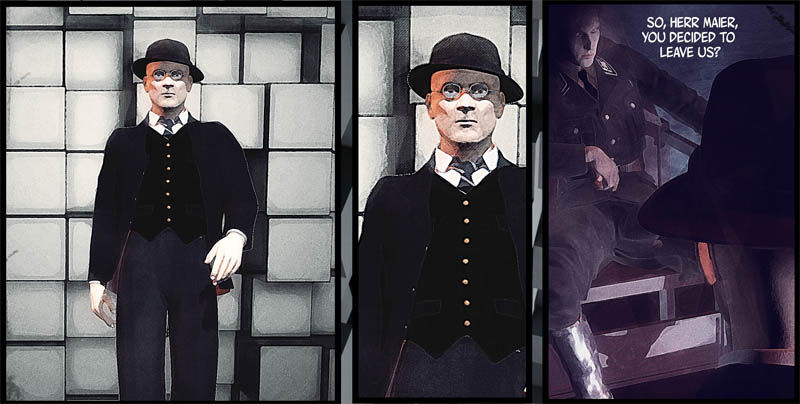In a global phenomenon known as ‘Blackout Tuesday,’ witnessed on June 2, 2020, the world seemingly united in a stand against racism and police brutality. However, behind the corporate world’s enthusiastic participation in virtue-signaling, a more sinister motive lurked beneath the facade. Unbeknownst to millions who unwittingly participated, a deeper, occult mass-ritual unfolded, manipulating them through a symbolic act rooted in ancient mysticism.
The Symbolism of the Black Square
The seemingly innocent act of posting a black square on social media carried a hidden significance – it was an unwitting participation in an occult ritual. The black square, or its 3D equivalent, the cube, serves as a universal and age-old hermetic symbol representing Earth, matter, and base consciousness. However, its darker connotation links it to Saturn, also known as Kronos, a symbol revered by occultists for its association with the mythological Golden Age.
Understanding the Occult
Before delving further, it’s crucial to acknowledge some fundamental aspects:
- Superstitions and Beliefs: One need not believe in occult superstitions to study them. Many influential figures, despite their power, subscribe to these beliefs.
- Complexity of Symbols: Reverse engineering occult symbols proves to be an impossible and pointless task due to the myriad interpretations each symbol may hold.
- Occultists and Enlightenment: Occultists, despite claiming hidden knowledge, often find themselves entangled in the convoluted nature of their discipline. True enlightenment embraces simplicity, a trait lacking in occult practices.
The crux lies in understanding that truth, while existing, cannot be fully articulated or grasped mentally. Analogous to the mathematical constant Pi (π), which is transcendental and cannot be entirely expressed, the Truth can only be experienced. Occultists, driven by control and fear, stand far from the realm of Love and Light, lacking the wisdom essential for a genuine connection with the profound.
The enigmatic cult of Saturn, deeply rooted in mythology, holds a pervasive influence on modern society, hidden behind obscure symbols and rituals. This article aims to unravel the connections between Saturn and the concept of a New World Order, shedding light on the esoteric significance of the black cube.

The Golden Age of Saturn
The mythical “reign of Saturn” harks back to a bygone era known as the “golden age,” where mortal men lived akin to gods, free from sorrow and toil. Occultists and theosophists anticipate the return of this era, referring to it as the “New Age” or the “Age of Aquarius.”
Virgil’s Eclogue and the New World Order
The phrase “novus ordo seclorum,” meaning “new world order,” finds its roots in Virgil’s fourth Eclogue, foretelling the arrival of a new era associated with Saturn’s reign. This prophecy speaks of justice returning, marking the dawn of a golden age with the birth of a prophetic child.
Saturn’s Role in the New Age
The concept of Saturn’s return is intricately linked with an eschatological theme across various traditions – an “apocalypse” followed by a new golden age. The Fraternitas Saturni emphasizes the coming Aquarian-Uranian Age ruled by Saturn, envisioning a future where a spiritual elite holds increasing power.
The Cult of the Black Cube
Saturn’s influence in modern society extends through the symbolism of the black cube, a motif often overlooked. The book “The Cult of the Black Cube: A Saturnian Grimoire” by Dr. Arthur Moros provides a well-referenced exploration of the Saturnine cult. The black cube symbolizes a spiritual dimension, a prison for the Saturnine deity, and its ritualistic invocation signifies the release of Saturn from this metaphysical confinement.
Ancient Texts and Saturnian Symbolism
The Picatrix, a Latin translation of the hermetic Arab text Ghāyat al-Ḥakīm, sheds light on the Saturnian cult, referring to the deity as a cube. The black cube symbolism appears consistently across mythologies, with Saturn’s physical presence represented by a black stone, cube, or obelisk in various cultures.
The mysterious and intricate cult of Saturn, rooted in ancient mythology, continues to exert its influence on modern societies, leaving an indelible mark on esoteric traditions and religious beliefs. This article aims to delve into the connections between Saturn’s reign, the New Age, and the enigmatic symbolism of the black cube.
Saturn: Source of Evil and Contradictions
Despite being associated with an era of abundance and peace, Saturn is universally recognized, even by its worshipers, as the source of evil, decay, malevolence, destruction, and darkness. This paradoxical nature leads to questions about how a malevolent deity can possess a code of honor or some frame of reference understandable to humans.
Exploring this contradiction, the Cult of the Black Cube delves into the concept of honor within the Saturnine cult, suggesting that the deity may acknowledge sacrifices and prayers made in its honor, responding accordingly. This honor also implies that approaching Saturn without proper respect and humility may incur the deity’s displeasure.
The Saturnine Kingdom
Utopia or Subjugation? While Saturn ruled, a utopia of equality and plenty existed, described as a golden age. However, the equality enjoyed under Saturn’s rule was an equality of utter subjugation. This paradoxical nature, where Saturn represents both malevolence and a seemingly ideal kingdom, sets the stage for the complexities within the Saturnine cult.
Saturn and the New World Order

The parallel between the New World Order and Saturn’s reign becomes evident when examining Saturn’s virtues and powers. Unlike a brute force approach, Saturn operates with subtlety and cunning, paving the way for a revolution through spiritual planes and quiet corridors of power. The occultist foresees a Saturnine kingdom characterized by surveillance, loss of civil liberties, and a return to tribal or feudal living.
Goals of the Saturnine Cult
The Saturnine cult is guided by two essential goals: the claim for sovereignty, leading to the restoration of the Saturnine kingdom, and the eventual return of Chaos. Under Saturn’s rule, the cult envisions a world free from fear, grief, and discrimination, achieving true equality through the dissolution of individuality. The return of Chaos, prophesied in eschatological beliefs, remains a distant yet significant goal for Saturnine acolytes.
Hexagon and Blood Sacrifice
The significance of the hexagon, symbolizing Saturn’s influence, is observed in the persistent hexagonal cloud pattern around Saturn’s north pole. The black cube, often depicted resting on one of its corners, ties into Saturn’s symbolism. The cult’s association with blood sacrifice, both historical and modern, underscores the importance of life offerings to Saturn, challenging contemporary occultists’ aversion to blood rituals.

Saturn in Rome and Abrahamic Religions
The historical ties between Saturn and Rome, where the original settlement was dedicated to Saturn, emphasize the deity’s revered status despite later shifts in the Roman pantheon. Saturnalia, a festival characterized by revels, pranks, and a temporary release of Saturn from bondage, offers insights into the complex relationship between Saturn and ancient Roman society. One should explore the Saturn’s connection to the Abrahamic religions. See how the influence of the deity reveals itself on religious practices, symbolism, and even the concept of the Demiurge.
The cult of Saturn, epitomized by the symbolism of the black cube, weaves through history, mythology, and religious beliefs. Unraveling the enigma surrounding Saturn’s influence on the New Age and the proposed New World Order requires a discerning exploration of the contradictions within the deity’s nature and its impact on diverse cultural and religious traditions…



